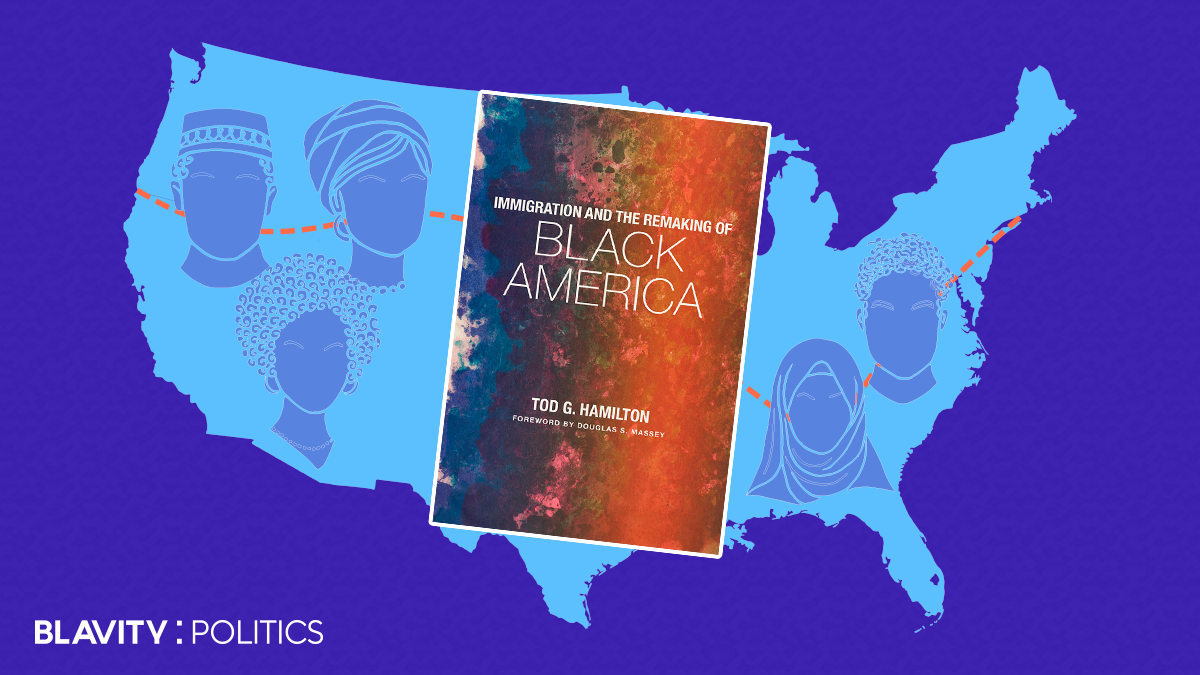Despite popular belief, Black America is comprised of markedly diverse communities and experiences. Even among native and foreign-born Black people, experiences related to many markers of success and disparity sometimes varies. Yet, there remains a lack of information that highlights this specificity, in both popular and academic spaces. Professor Tod G. Hamilton, at Princeton’s Department of Sociology, takes on this issue in his recently published book, Immigration and the Remaking of Black America (2019).
Offering careful, nuanced analyses of both native-born Black Americans and Black immigrants from 14 countries of origin, this work focuses on the unique factors that drive disparity in these communities by taking an in-depth look at social outcomes for health, labor, marriage and homeownership. Hamilton emphasizes several critical findings by grappling with the selectivity of migration and other nuances within Black experiences, making an important contribution toward better understanding Black demographics in the U.S., especially as it relates to policy.
We spoke with Professor Hamilton to learn more about his new book.
BP: One of the key interventions this study makes is that the achievement gap between native and foreign-born Black people is not about cultural norms. Can you speak further about this harmful myth and its impact?
TH: It's really interesting. Unlike many of the immigrant groups, there are fewer studies that have been done where they have attempted to understand the unique patterns of social integration for Black immigrants, understanding them as [a] racialized group of people. But as immigrants adapting to a new host environment, instead, a lot of the [research] on Black immigrants has used the experience of Black immigrants to draw conclusions about the relevant role of racism and discrimination and producing the poor outcomes of Black Americans.
And, you know, the narrative goes that if Black immigrants can succeed in the U.S. context, then it must be something other than race that's best determining the outcomes of Black Americans… and so, their success casts doubt on the importance of racism and discrimination. I challenged this notion demographically, showing that the Black immigrant population is far from a monolith.
When we say that Black immigrants do well, I mean, that's in many ways, just a meaningless statement… who are the individuals that we’re referring to? Are we referring to individuals from Haiti or individuals from Nigeria, or are we referring to men who tend to do less well in the U.S. context, and then immigrant women… are we talking about individuals who migrated in the 1960s, 1970s, or are we talking about contemporary migrants who migrated — let's say — five years ago? All those things matter for understanding the social integration of the groups.
BP: Because most people do not interact with the U.S. immigration system, what should the broader public understand about migration as it relates to Black people?
TH: So, in addition to migration being a selective process, we also know that different immigrants have different motivations. Some of it is driven by severe push factors, such as individuals that move seeking political refuge in the U.S. And we can think about migrants from Somalia, Sudan…Liberia, a number of other different countries in which individuals migrated to the U.S. at different time periods. [The origin country context] impacts why individuals move [and] how they're received. It impacts their social integration, and, in many ways, it also impacts the dispersion of the Black population in the U.S…. But, we also know that, very similar to Mexican migration to the U.S., there's significant evidence to suggest that, for many immigrants who move to the U.S., it may not always be thought of as a final destination.
BP: How do you see this research shaping intra-community dialogue about "The Black Experience” in the United States?
There is a sense in which we like to think of the U.S. Black population as a monolith, and I think that one of the things that the book does is it shows the immense diversity and experiences of the overall Black population in the U.S., and across most outcomes, it's pretty clear that there's a clear separation between all groups of Blacks and Whites along most measures of social and economic wellbeing, with acute exceptions for certain groups. And I think it's important to appreciate that heterogeneity, and particularly from a policy standpoint, when we're trying to understand the mechanisms giving rise to social disparities.
But we know that the legacy of racism and discrimination has a very long hand, and the legacy of slavery and Jim Crow in the U.S. context continues to impact the outcomes of Black Americans…That's one interesting conversation within the Black population that can be had….acknowledgement that although most group — all groups of Blacks who are currently in the U.S. may experience similar racialized conditions, but a part of our current outcomes is where we've been in the past.
The immigrants who migrated seeking political refuge in the U.S., they're very different, and the life outcomes of those groups will be very different from those individuals who migrated to the U.S. strictly to pursue higher education. And I think that it's important to understand these nuances, particularly when we're thinking about changes in social policy.
BP: Do you have any tentative long-term projections about how this changing demographic will impact measuring success and disparity in the future?
TH: I think it's important as we go forward that we make a sustained effort to collect data and analyze outcomes for Black Americans specifically, and immigrants from particular countries specifically, so that we don't generate misfit conclusions about what's driving changes in Black-White disparities.

